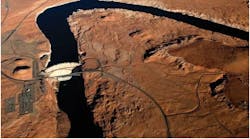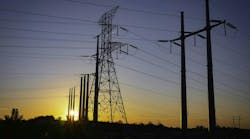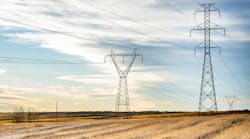Daybreak Power Inc. recently announced the Federal Energy Regulatory Commission (FERC) has accepted the company’s application for a preliminary permit for its proposed 2200-MW Navajo Energy Storage Station (NESS) near Page, Arizona.
The FERC’s decision marks an important early milestone for this estimated US$3.6 billion project, which would use existing transmission infrastructure at the retired Navajo Generating Station coal plant and serve as an anchor of economic development as the Navajo Nation transitions to renewable energy resources.
The NESS is a pumped storage hydropower facility that would use water from Lake Powell and a new reservoir on a plateau above the lake to create a gigantic battery. The facility would use cheap, abundant solar and wind energy to pump water to the upper reservoir, then release it through turbines to generate 10 hours of renewable energy each day to power cities in California, Arizona, and Nevada when demand peaks late in the day and through the night.
Unlike other proposed pumped storage projects in the region, the NESS project would not dam any rivers, inundate sacred places, or deplete precious groundwater. It was sited to minimize impacts on endangered species, steer clear of culturally significant sites, and avoid adverse impact on recreation.
Daybreak Power is working with the Navajo Nation, other First Nations, the recreation industry, and conservation groups to develop this storage project that will open a path to building a 100% carbon-free economy once and for all.
"Everyone knows we’re going to need massive amounts of storage to integrate high levels of renewables, and we need to do it smartly and cost-effectively. The NESS does that," said Daybreak CEO Jim Day. "This project marks a turning point for this region to begin its transition from coal to solar and wind at a scale never seen before, here or anywhere else.”
The NESS facility is Daybreak’s second huge energy storage project, following its proposed 1540-MW Next Generation Pumped Storage facility that would use water from Lake Mead and transmission infrastructure near Hoover Dam.
Each of these projects dwarfs any proposed storage facility using lithium-ion (Li-ion) batteries, leveraging the economy of scale and 50+ year lifespan of pumped hydro facilities to offer a far more cost-effective storage solution. Pumped hydro is a well understood technology that has provided 95% of the nation’s electricity storage for decades — far longer than the lifespan of current batteries, which wear out in just a few years.
"It's long past time to stop messing around and start building storage projects that actually work to deliver renewable energy on-demand, around the clock," Day said.


